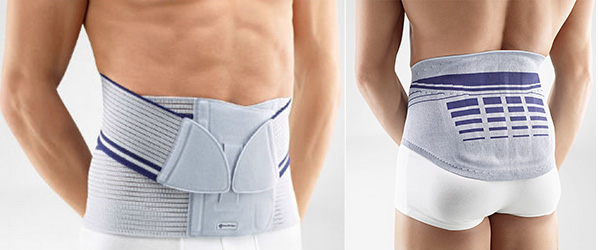Knee Pain Is it changing your lifestyle?
We have been in the business of helping people reduce their pain and become more active through orthopedic appliances, compression therapy, supports and orthotics for over 20 years. Our team is dedicated to coming up with the right solution for you. So let’s talk ‘knees’!
Do you have knee pain, aching, stiffness and soreness after long periods of inactivity; mild to severe pain after overuse or ascending or descending stairs? These are common symptoms of Osteoarthritis (OA).
Osteoarthritis, also known as degenerative joint disease, is the most common type of arthritis affecting one in ten Canadian adults. It can affect any joint but commonly occurs in weight bearing joints such as the knee. The cartilage (firm, rubbery material) that covers the ends of the bones in normal joints acts as a shock absorber. Over time, the cartilage and meniscus may wear away in some areas decreasing its ability to cushion the bone. As this happens tendons and ligaments stretch, causing pain. As the condition worsens the bones may rub against each other. Osteoarthritis can be caused by many factors including heredity, obesity, injury or joint overuse.
Unloading Knee Braces – Non-Invasive Options
A safe, non-invasive viable option is an Osteoarthritis Unloader knee brace specifically designed to treat OA. It stabilizes the joint, reduces pain and helps to build stronger muscles allowing patients to return to the activities they love whether that is everyday living or sports. OA braces relieve pain by redistributing the weight bearing load on the painful or affected compartment of the joint to the healthier or unaffected compartment. Increased function studies have shown that wearing an OA brace can increase daily functions and decrease pain. Patients diagnosed with OA who wear a knee brace will generally feel better in the morning, be more active during the day, and rest more comfortably at night. Braces cannot cure osteoarthritis and may not be right for everyone however, it is a viable and successful solution for many people. The ideal candidates are typically people who are motivated to strengthen their muscles and willing to wear a brace to realize the benefits of this form of treatment. There are many different types of OA braces designed for all activity levels. One of the programs offered at Soles in Motion is the 30 Day Free Trial OA Program so you have the opportunity to feel its success without incurring any costs and you do not need a prescription.
No matter what your ability, we believe that with the proper treatment plan, you can reduce your pain and achieve your goals. Education is key in making an informed decision. Keep your joints moving and if you have given up activities due to increased pain try low-impact exercises, group activities such as chair yoga, walking and other exercises to help you reach your goals. Swimming or cycling will strengthen your joints and increase their range of motion. Stronger muscles can reduce the stress on your joints during everyday activities. Give us a call at 902-468-7911 or email me atJennifer@solesinmotion.ca and book a free no obligation appointment.
Submitted by Jen Estabrooks, Brace Specialist, Soles in Motion





